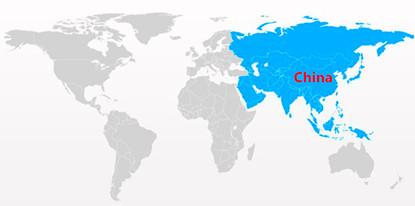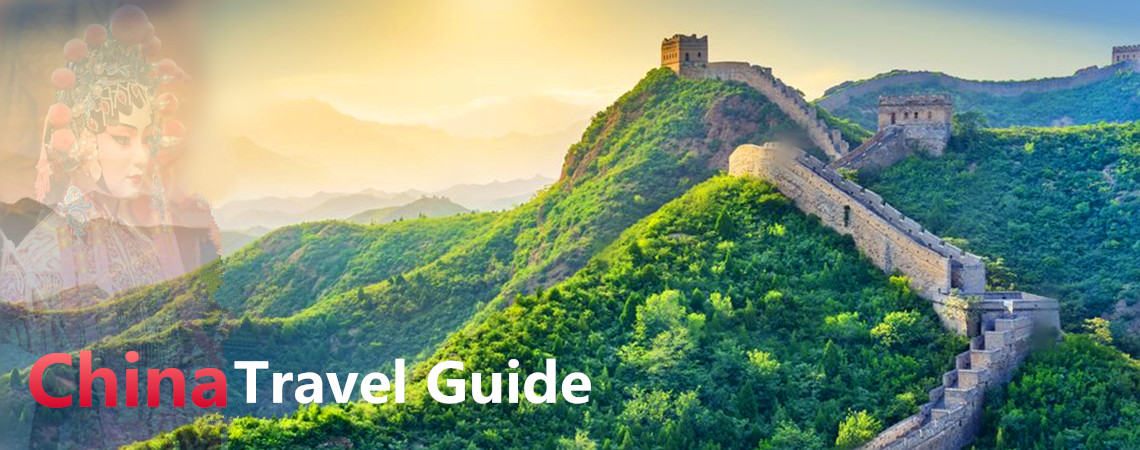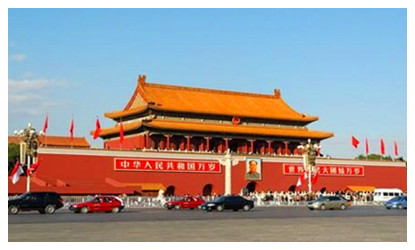China is the world's third biggest country by territory, and has the largest population. It is one of the longest-running civilizations on earth with its unique and attractive culture. It has developed at record
Facts of China
Full Name: The People's Republic of China
Chinese Name: 中国 Zhōngguó /jong-gwor/, the Middle Country
Population: 14 billion
Land Area: Approximately 9.6 million square km
Capital City: Beijing
Currency: RMB ¥
Time Difference: 8 hours earlier than GMT
Geography of China

Situated in eastern Asia,and on the western shore of the Pacific Ocean, the People’s Republic of China covers a land area of 9.6 million square kilometers, with an inland and coastal water area of more than 4.7 million square kilometers and an eastern and southern continental coastline extending for about 18,000 kilometers. Its vast maritime territory is studded with 7,600 islands, of which Taiwan is the largest with an area of 35,798 square kilometers. China shares common borders with 14 countries and is adjacent to 8 nations on the ocean. There are 4 municipalities directly under central government administration, 23 provinces, 5 autonomous regions and 2 special administrative regions...
More
History of China
China, with a recorded history of more than 5,000 years, is one of the four ancient civilizations. From the time of the founding of Xia dynasty in the 21st century BC to the late Spring and Autumn period, with the Shang and Western Zhou dynasties in between, society was slavery based. From the time of the Warring States period of 475 BC to the early period of the Qing dynasty, with Qin, Western Han, Eastern Han, Three Kingdom, Western Jin, Eastern Jin, Southern and Northern dynasties, Sui, Tang, Five dynasties, Song, Liao, Jin, Yuan, and Ming in between, society was feudal. After the Opium War in 1840, China gradually turned into a semi-colonial and semi-feudal society as a result of imperialist invasion. In 1911, the 1911 Revolution, led by Sun Yat-sen, ended the monarchy and on October 1, 1949, the CPC, under the leadership of Mao Zedong, led the masses and established the People’s Republic of China..
.More
National Flag
On September 27, 1949, the First Plenary Session of the Chinese People's Political Consultative Conference adopted a resolution establishing the national flag of the People's Republic of China as a red flag with five stars. The flag is red in color, which symbolizes revolution, and rectangular in shape with the proportion between the length and height being 3 to 2. The five five-pointed yellow stars are located in the upper left corner, one of them, which is larger, appears on the left, while the other four hem it in on the right. This represents the great unity of the Chinese people under the leadership of the CPC.
National Anthem
On September 27, 1949, the First Plenary Session of the Chinese People's Political Consultative Conference adopted the resolution that the national anthem of the People’s Republic of China be “March of the Volunteers”.
National Emblem
On June 23, 1950, the second session of the First Plenary Session of the Chinese People's Political Consultative Conference adopted the design for the national emblem of the People’s Republic of China. The National Emblem of the People's Republic of China, “shall comprise the design of Tian' anmen in its centre illuminated by five stars and encircled by ears of grain and a cogwheel, which symbolizes the New Democratic Revolution of China since the May 4 Movement (1919) and the birth of the People’s Republic of China under the people’s democratic dictatorship led by the working class and based on the alliance of workers and peasants."
Ethnic Groups
There are 56 ethnic groups in China, among which the Han people account for 92% of the total population while the other 55 ethnic groups 8%. In addition to the Han, the other ethnic groups are: Zhuang, Hui, Uyghurs, Yi, Miao, Manchu, Tibetan,
Mongols,
Tujia, Buyei, Korean, Dong,
Yao, Bai, Hani, Kazakh, Dai, Li, Lisu, Va, She, Lahu, Sui,
Dongxiang, Nakhi, Kyrgyz, Tu, Qiang, Daur,
Jingpo, Mulao, Xibe, Salar, Blang, Gelao, Maonan, Tajik, Pumi, Nu, Achang, Ewenki, Uzbeks, De’ang,
Jing, Jino, Yugur, Bonan, Russian, Monba, Derung, Oroqen, Tatars, Lhoba, Gaoshan, and Hezhen.
Languages and characters
ifty-three ethnic groups speak their own distinct languages and 23 ethnic groups have their own writing scripts.
Religions
Religions represented in
China include Buddhism, Daoism, Islam, Catholicism and other Christian groups. People are free to pursue any religion.
Major Holidays
National Day: October 1; International Labor Day: May 1; New Year’s Day: January 1; Spring Festival: January 1 of the lunar calendar - this is the biggest festival in
China.
Economy of China
China has a relatively mature industrial system, with established commercial categories and products. Agriculture holds an important place in the economy and the output of grains, cotton, sugar, oil, tea and other agricultural products is among the highest in the world. China’s handcrafts industry is also world famous for its sophistication and skill. China has now built a traffic and transport network with railways, highways, waterways and airlines as the main contributors to this infrastructure. The GDP reached RMB 8.9404 billion at the end of 2000.

 speed to become the second largest economy in the world. Furthermore, China holds innumerable attractions for tourists to explore.
speed to become the second largest economy in the world. Furthermore, China holds innumerable attractions for tourists to explore. Situated in eastern Asia,and on the western shore of the Pacific Ocean, the People’s Republic of China covers a land area of 9.6 million square kilometers, with an inland and coastal water area of more than 4.7 million square kilometers and an eastern and southern continental coastline extending for about 18,000 kilometers. Its vast maritime territory is studded with 7,600 islands, of which Taiwan is the largest with an area of 35,798 square kilometers. China shares common borders with 14 countries and is adjacent to 8 nations on the ocean. There are 4 municipalities directly under central government administration, 23 provinces, 5 autonomous regions and 2 special administrative regions...More
Situated in eastern Asia,and on the western shore of the Pacific Ocean, the People’s Republic of China covers a land area of 9.6 million square kilometers, with an inland and coastal water area of more than 4.7 million square kilometers and an eastern and southern continental coastline extending for about 18,000 kilometers. Its vast maritime territory is studded with 7,600 islands, of which Taiwan is the largest with an area of 35,798 square kilometers. China shares common borders with 14 countries and is adjacent to 8 nations on the ocean. There are 4 municipalities directly under central government administration, 23 provinces, 5 autonomous regions and 2 special administrative regions...More
 Ask Questions ?
Ask Questions ?